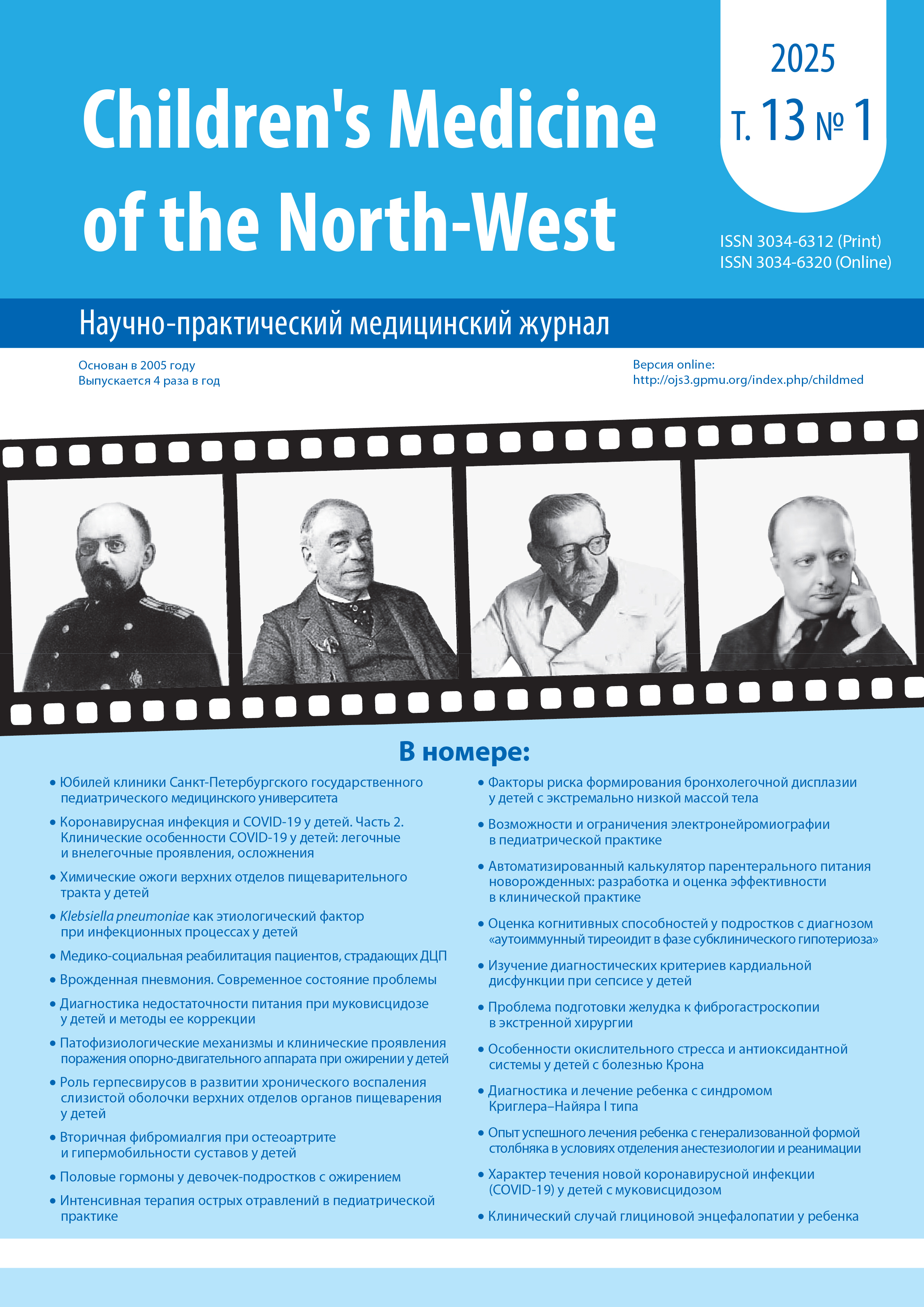THE EXPERIENCE OF SUCCESSFUL TREATMENT OF A CHILD WITH GENERALIZED TETANUS IN THE ANESTHESIOLOGY AND INTENSIVE CARE UNIT
Abstract
Tetanus is a life-threatening disease that is caused by the spore-forming, obligately anaerobic Gram-positive bacillus Clostridium tetani, which secretes a potent endotoxin. In pathogenesis, the key link is the damage of the structures of the central and peripheral nervous system with impaired neuromuscular transmission by a toxin. The first and most common symptom is a change in the tone of the facial muscles. Muscle spasm involving several muscle groups increases oxygen consumption and creatine phosphokinase (CK) production, promotes rhabdomyolysis with increased myoglobin, which leads to acute renal injury (AKI). The issue of tetanus in pediatrics remains relevant, given the severity of the consequences and the high mortality rate (20-60%). The situation is aggravated by the high level of injuries, an increase in the number of refusals to vaccinate and the lack of a standardized approach to treatment. Preschool children who come into direct contact with the soil while playing in sandboxes should also be considered at risk. The article presents a clinical case of successful treatment of generalized tetanus in a 13-year-old child who developed as a result of a domestic injury. Special attention is paid to an integrated approach to treatment and rehabilitation measures. The methods of tetanus treatment in various medical institutions in Russia and neighboring countries are analyzed. The described case of tetanus treatment in the conditions of the Department of anesthesiology and intensive care emphasizes the importance of interdisciplinary interaction in modern medical practice. The experience gained during successful treatment can be taken into account to improve tetanus treatment approaches among the pediatric population.
References
Александрович Ю.С., Пшениснов К.В., Гордеев В.И. Интенсивная терапия критических состояний у детей. Пособие для врачей. СПб.: Издательство Н-Л.; 2014.
Веденин Ю.И., Михин И.В., Косивцев О.А. Столбняк. Учебное пособие. Волгоград: ВолгГМУ; 2020.
Петлах В.И. Столбняк у детей: современная концепция управления инфекцией. Альманах клинической медицины. 2018:46(2).
Мальцева Л.А., Мосенцев Н.Ф., Мальцев И.А., Мищенко Е.А. Столбняк: обзор современных рекомендаций по эпидемиологии, этиологии, патогенезу, клиники, интенсивной терапии в период войн и в мирное время. Днепропетровская медицинская академия МЗ, Медицина неотложных состояний. 2017;3(82).
Bae C., Bourget D. Tetanus. 2023 May 31. In: StatPearls [Internet]. Treasure Island (FL): StatPearls Publishing; 2024 Jan. Доступно по: https://www.ncbi.nlm.nih.gov/books/NBK459217/ (дата обращения: 07.02.2025).
Попков О.В., Алексеев С.А., Лемешевский А.И. Столбняк. Учебно-методическое пособие. Минск: БГМУ; 2011.
Callison C., Nguyen H. Tetanus Prophylaxis. Treasure Island (FL): StatPearls Publishing; 2024.
Seidi M., Soumare M., Gbangba-ngai E., Muge Ngadeu J. F., Diop B.M., N’Diaye B., Sou P.S. Modern aspects of tetanus control in children and adults in Dakar. Clinic of Infectious Diseases, Ibrahima-Diop-Mar, CHOUX-de-Fann, BP 15499, Dakar-Fann, Senegal. 2005;35(1):28–32.



